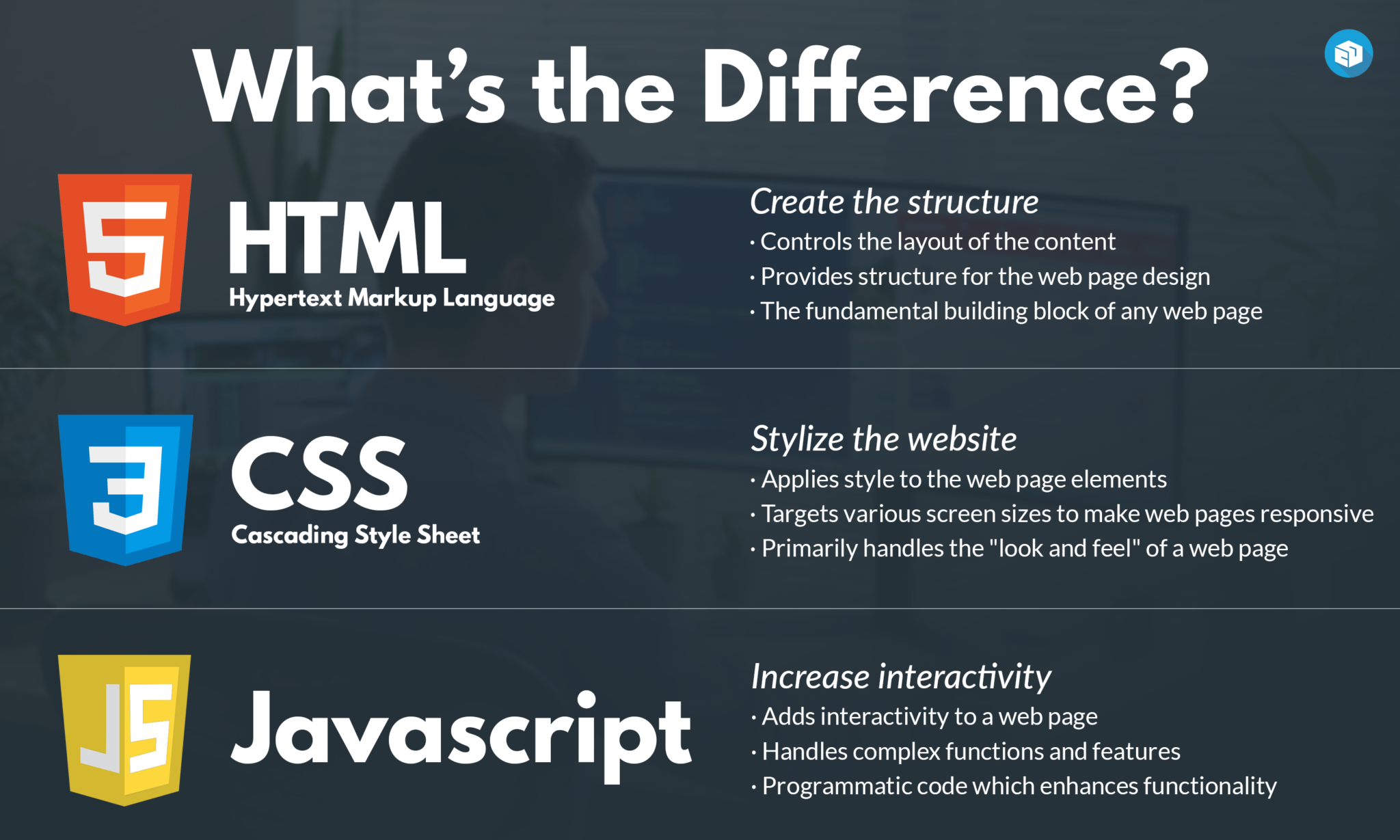Let's start by distinguishing between these three languages, how they look like, and what they do.
So in summary:
HTML gives structure to a website. (like what would be the order of an element)
CSS makes it pretty (like the color of my elements)
JS makes it interactive (what happens if I click a button)
Although this course is focused on web applications, many of the principles can be used for other platforms. JavaScript is a very powerful programming language that, with the right tools, could allow you to create mobile apps , desktop apps , program robots or create powerful back ends .
Not to mention it's one of the most demanded programming languages for professional job opportunities and it's easy-to-learn syntax, it was the obvious choice when choosing a programming language for writing web applications. Even with interesting alternatives like Dart or Web Assembly , JavaScript is still the number one choice for everything related to front end programming.
Yes, in the next lessons, we will cover the basics of javascript, but keep the following page bookmarked, because many of the concepts we will see, probably you've already seen while learning Python.
Python Concept Python Example JavaScript Concept JavaScript Example
Integer x = 5 Number let x = 5; Float y = 3.14 Number let y = 3.14; String s = 'hello' String let s = 'hello'; Boolean b = True Boolean let b = true;
Python Concept Python Example JavaScript Concept JavaScript Example
Addition result = x + y Addition let result = x + y; Subtraction result = x - y Subtraction let result = x - y; Multiplication result = x * y Multiplication let result = x * y; Division result = x / y Division let result = x / y;
Python Concept Python Example JavaScript Concept JavaScript Example
Variable assignment x = 10 Variable assignment let x = 10; Constants X = 10 Constants const X = 10;
Python Concept Python Example JavaScript Concept JavaScript Example
If-else if x > 0: print("Positive") If-else if (x > 0) { console.log("Positive"); } else: print("Non-positive") else { console.log("Non-positive"); }
Python Concept Python Example JavaScript Concept JavaScript Example
For loop for i in range(3): print(i) For loop for (let i = 0; i < 3; i++) { console.log(i); } While loop while x > 0: x -= 1 While loop while (x > 0) { x--; }
Python Concept Python Example JavaScript Concept JavaScript Example
Function definition def func(): return "Hello" Function definition function func() { return "Hello"; }
Python Concept Python Example JavaScript Concept JavaScript Example
List (Array) my_list = [1, 2, 3] Array let myArray = [1, 2, 3]; Dictionary (Object) my_dict = {"key": "value"} Object let myObject = {"key": "value"}; List of Dictionaries my_list = [{"key1": "value1"}, {"key2": "value2"}] Array of Objects let myArray = [{"key1": "value1"}, {"key2": "value2"}];
Python Concept Python Example JavaScript Concept JavaScript Example
String length length = len(s) String length let length = s.length; String concatenation combined = s1 + s2 String concatenation let combined = s1 + s2; String find index = s.find('llo') String indexOf let index = s.indexOf('llo');
Python Concept Python Example JavaScript Concept JavaScript Example
Append to array my_list.append(4) Push to array myArray.push(4); Remove from array my_list.remove(2) Splice from array myArray.splice(myArray.indexOf(2), 1); Array length length = len(my_list) Array length let length = myArray.length; Access array element element = my_list[0] Access array element let element = myArray[0]; Sort array my_list.sort() Sort array myArray.sort(); Reverse array my_list.reverse() Reverse array myArray.reverse();
